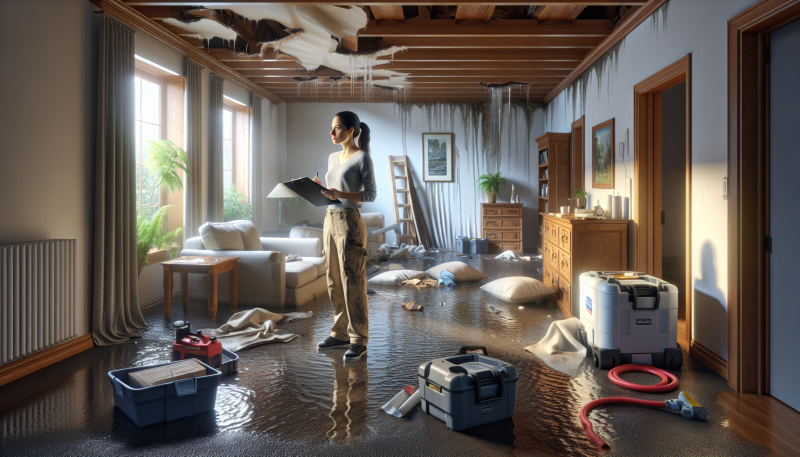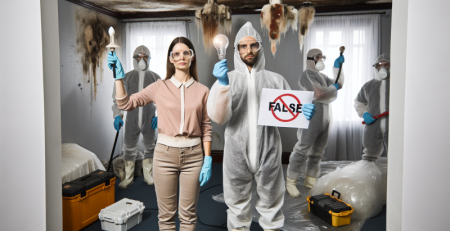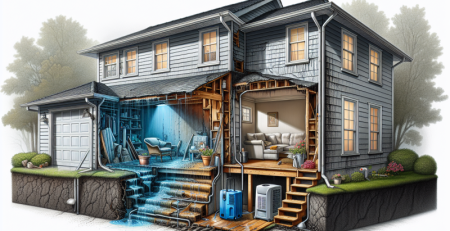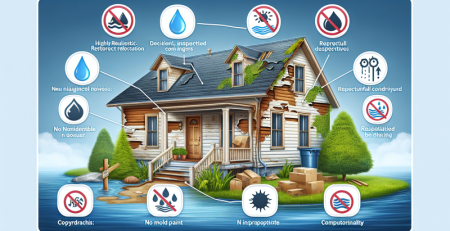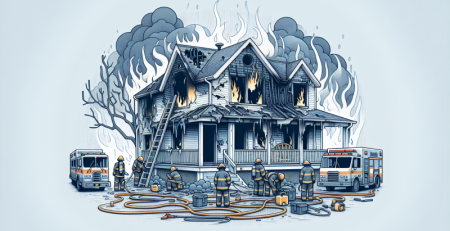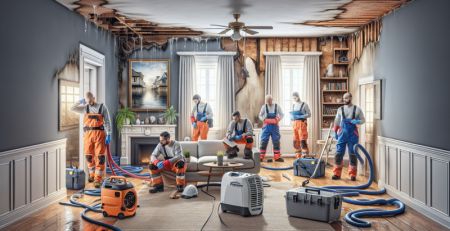The Hidden Costs of Water Damage Restoration
Water damage can strike unexpectedly, leaving homeowners and property managers grappling with the aftermath. While many are aware of the immediate expenses associated with water damage restoration, such as cleanup and repairs, there are often hidden costs that can catch you off guard. At Kraus Restoration, NJ’s leaders in water damage, we understand the complexities involved in restoring your property to its former glory. Our mission is to provide swift and professional assistance to those affected by water, mold, fire, or smoke damage. With our 24/7 emergency services, we ensure that help is just a call away, ready to tackle issues like stormwater runoff, sewage backups, and mold remediation. In this blog, we will delve into the often-overlooked expenses of water damage restoration, helping you prepare for the financial implications of such an unfortunate event. Whether you are a homeowner or a property manager in Central and Northern New Jersey, understanding these hidden costs can empower you to make informed decisions during a crisis. Trust Kraus Restoration to guide you through the restoration process with expertise and care.
Understanding the Financial Impact of Water Damage
Water damage can be a devastating experience for homeowners and business owners alike, often leading to significant financial repercussions that extend far beyond the immediate costs of restoration. Understanding the financial impact of water damage is crucial for anyone facing such a crisis, as it can help in making informed decisions about restoration efforts and insurance claims.
When water infiltrates a property, whether due to a burst pipe, flooding, or a leaky roof, the initial costs may seem manageable. However, the hidden costs associated with water damage restoration can quickly accumulate. According to the Insurance Information Institute, water damage is one of the most common claims made by homeowners, with an average claim cost of around $11,000. This figure can vary significantly based on the extent of the damage, the type of water involved, and the speed of the response.
One of the primary financial impacts of water damage is the cost of restoration itself. This includes not only the visible repairs, such as replacing drywall and flooring, but also the often-overlooked expenses related to mold remediation, structural repairs, and the replacement of damaged personal belongings. Mold can begin to grow within 24 to 48 hours after water exposure, leading to additional costs for remediation. The Environmental Protection Agency (EPA) estimates that mold remediation can cost anywhere from $500 to $6,000, depending on the severity of the infestation.
In addition to restoration costs, there are also indirect financial impacts to consider. For instance, the loss of use of a property can lead to lost rental income or business revenue. A study by the National Flood Insurance Program found that businesses that are forced to close for more than five days due to water damage may never fully recover, with many going out of business within a year. This highlights the importance of quick action and effective restoration efforts.
Insurance can play a significant role in mitigating the financial impact of water damage. However, navigating insurance claims can be complex and time-consuming. Many homeowners are unaware of what their policies cover, which can lead to unexpected out-of-pocket expenses. It is essential to review your insurance policy carefully and consult with your insurance agent to understand your coverage limits and exclusions. According to a survey by the Insurance Research Council, about 30% of homeowners do not have flood insurance, which can be a critical oversight in areas prone to flooding.
Another financial consideration is the potential decrease in property value following water damage. Properties that have experienced significant water damage may be viewed as less desirable by potential buyers, leading to lower offers or extended time on the market. A report by the National Association of Realtors indicates that homes with a history of water damage can lose up to 25% of their market value. This long-term financial impact can be particularly concerning for homeowners looking to sell their property in the future.
To further illustrate the financial implications of water damage, consider the following examples:
- A homeowner experiences a burst pipe that floods their basement. The immediate restoration costs amount to $15,000, but after a few months, they discover mold growth that requires an additional $3,000 for remediation.
- A small business suffers water damage from a leaky roof, forcing them to close for two weeks. During this time, they lose approximately $10,000 in revenue, and the restoration costs total $20,000.
- A property owner discovers that their insurance policy does not cover flood damage, resulting in a $30,000 out-of-pocket expense for repairs and restoration.
In conclusion, the financial impact of water damage is multifaceted and can lead to significant costs that extend beyond the initial restoration efforts. Homeowners and business owners must be proactive in understanding their insurance coverage, acting quickly to mitigate damage, and considering the long-term implications of water damage on property value. By being informed and prepared, individuals can better navigate the challenges posed by water damage and minimize its financial repercussions. For more information on how to protect your property from water damage, visit our water cleanup services page or contact us for assistance. Understanding these hidden costs can empower property owners to take the necessary steps to safeguard their investments and ensure a swift recovery.
Long-Term Consequences Beyond Immediate Restoration Costs
Water damage restoration is often viewed through the lens of immediate costs and visible repairs. However, the long-term consequences of water damage extend far beyond the initial restoration expenses, impacting both property value and the health of occupants. Understanding these hidden costs is crucial for homeowners and business owners alike, as they can significantly affect financial stability and quality of life.
One of the most significant long-term consequences of water damage is the potential for mold growth. Mold thrives in damp environments, and if water damage is not addressed promptly and thoroughly, it can lead to extensive mold infestations. Mold not only damages the structure of a building but also poses serious health risks to occupants. Prolonged exposure to mold can lead to respiratory issues, allergies, and other health complications. The costs associated with mold remediation can be substantial, often requiring specialized services to ensure that the mold is completely removed and that the environment is safe again. For more information on how to deal with mold issues, you can visit our mold cleanup page.
Another hidden cost of water damage is the potential for structural damage. Water can weaken the integrity of walls, floors, and foundations, leading to costly repairs that may not be immediately visible. Over time, untreated water damage can result in sagging ceilings, warped floors, and even compromised foundations. These structural issues can lead to significant repair costs and may even necessitate complete renovations. Regular inspections and maintenance are essential to catch these problems early, but they can add to the overall expense of owning a property that has experienced water damage.
Additionally, water damage can affect the value of a property. Homes and businesses that have a history of water damage may be viewed as less desirable by potential buyers, leading to decreased property values. This depreciation can have long-lasting financial implications, especially if the property needs to be sold in the future. Furthermore, insurance companies may increase premiums or deny coverage for properties with a history of water damage, leading to ongoing financial burdens for the owner.
The psychological impact of water damage should not be overlooked. The stress and anxiety associated with dealing with the aftermath of water damage can take a toll on mental health. Homeowners may feel overwhelmed by the restoration process, the financial implications, and the fear of future incidents. This emotional strain can lead to decreased quality of life and may affect relationships within the household.
In addition to these factors, there are also potential legal implications. If water damage is not properly addressed, it can lead to disputes with insurance companies or even with neighbors if the damage affects adjacent properties. Legal fees and the costs associated with potential lawsuits can add another layer of financial burden to an already challenging situation.
To mitigate these long-term consequences, it is crucial to act quickly and seek professional help immediately after water damage occurs. Engaging with experienced restoration services can ensure that the damage is assessed accurately and that all necessary repairs are made. For comprehensive restoration services, you can explore our services page, which outlines our approach to water damage restoration and how we can help you recover effectively.
In conclusion, while the immediate costs of water damage restoration may be the most visible concern, the long-term consequences can be far more significant. From health risks associated with mold to structural damage, decreased property value, and emotional stress, the hidden costs of water damage can impact homeowners and businesses for years to come. Understanding these implications is essential for making informed decisions and ensuring that properties remain safe, healthy, and valuable over time. If you have experienced water damage, do not hesitate to reach out to us through our contact page for expert assistance and guidance.
In conclusion, while the immediate costs of water damage restoration may seem manageable, it is essential to consider the hidden expenses that can arise throughout the process. From potential structural repairs and mold remediation to the impact on your insurance premiums and the emotional toll of dealing with such a crisis, the financial implications can quickly escalate. By understanding these hidden costs, homeowners can better prepare themselves for the realities of water damage restoration and take proactive steps to mitigate risks. Investing in preventative measures, such as regular maintenance and timely repairs, can save you from the unforeseen expenses that often accompany water damage. Ultimately, being informed and prepared is key to navigating the complexities of restoration and ensuring your home remains a safe and healthy environment.
